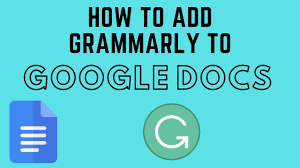In today’s digital landscape, where consumers are constantly bombarded with information, creating a successful content strategy has become more critical than ever for brands. A well-executed content strategy helps businesses cut through the noise, builds brand credibility, engages target audiences, and drives profitable customer actions. It is the foundation for a brand’s online presence and is pivotal in attracting, retaining, and converting customers.

What Is a Content Strategy?
A content strategy is a strategic approach that encompasses the planning, creation, distribution, and management of content to achieve specific business goals. It involves the thoughtful and deliberate development of valuable, relevant, and consistent content across various digital platforms and channels. A content strategy goes beyond individual pieces of content and focuses on the overall vision and purpose of content within the broader marketing and brand strategy.
At its core, a content strategy involves understanding the target audience, their needs, preferences, and pain points and effectively creating content that addresses those aspects.
It requires aligning the content with the brand’s goals, values, and messaging to ensure a cohesive and consistent brand image. A content strategy also involves defining key performance indicators (KPIs) to measure the effectiveness of content and optimize it based on data-driven insights.
To craft an effective strategy, you may need to have a good content marketing team. Although smaller companies often hire one person responsible for multiple roles, you, as a business owner, want to know what it takes to develop a content strategy to attract the necessary team members and maximize results.
Whether you need a content marketing manager, a content strategist, a content creator, or social media specialist, you can get them using Leadar and its AI algorithm to access information. Before contacting them, however, take a look at the core elements of any successful content strategy and consider what you can do to contribute to the process of its creation.
Elements of a Successful Content Strategy
Here are the essential parts of any content strategy and the steps you can follow to reach and engage your target audience.
Defined Goals and Objectives:
You should define your content strategy’s goals and objectives. What do you aim to achieve with your content? Whether it’s increasing brand awareness, driving website traffic, generating leads, or boosting customer engagement, having well-defined goals will help shape your content creation and distribution efforts.
- Audience Research and Persona Development:
Conducting thorough research is necessary to deeply understand your target audience. Identify their demographics, preferences, needs, pain points, and online behavior. Develop detailed buyer personas to create content that resonates with your audience and addresses their needs.
- Content Planning and Editorial Calendar:
Establish a content planning process and create an editorial calendar. This will help you schedule your content creation and publication. A content marketing agency will determine your content’s topics, themes, and formats based on audience research and business objectives. Include important dates, events, holidays, and relevant industry trends. A well-structured editorial calendar ensures a consistent flow of content and helps you stay organized.
- Content Optimization for SEO:
Implementing search engine optimization (SEO) techniques will make your content more discoverable. Conduct keyword research: identify keywords and phrases that work best for your content when searching for information related to your industry or niche. Incorporate these keywords into your content to improve its visibility in search engine results. Optimize headlines, write compelling meta tags and descriptions, and ensure your content follows SEO best practices. This helps improve your organic search rankings and drives targeted traffic to your website.
- Content Distribution Strategy:
It’s crucial to determine the channels and platforms where your target audience is most active and tailor your content distribution strategy accordingly. Whether it’s social media, email marketing, guest blogging, or video platforms, select the right channels to maximize your content’s reach and engagement.
- Consistent Brand Voice and Messaging:
Maintain a consistent brand voice and messaging across all your content. Define the core messages you want to convey through your content. These messages should align with your brand identity, values, and unique selling proposition. Ensure your brand’s values and personality shine through in your content. Consistency helps in building brand recognition and fosters trust among your audience.
- Engaging and Valuable Content:
Focus on creating high-quality, engaging, and valuable content. It should be informative, entertaining, or educational. Offer unique insights, actionable tips, and solutions to your audience’s problems. Ensure that your content provides genuine value and encourages audience interaction and sharing.
- Content Variety and Format:
Diversify your content formats to cater to different preferences and engage your audience effectively. Use blog posts, videos, infographics, podcasts, case studies, ebooks, and interactive content to provide valuable information in various formats.
- Content Promotion and Amplification:
Don’t rely on organic reach; actively promote and amplify your content. Develop a promotional plan to distribute and share your content effectively. Utilize social media advertising, influencer collaborations, email newsletters, guest posting, and content syndication to increase your content’s visibility and reach a wider audience. Engage with your audience by responding to comments, questions, and feedback.
- Continuous Analysis and Optimization:
Regularly monitor and analyze the performance of your content. Use analytics tools to track website traffic, engagement, conversions, and social media metrics. Identify what works well and needs improvement, and make data-driven adjustments accordingly. Based on the insights gained, refine your content strategy, optimize underperforming content, and replicate successful approaches. Adapt to industry or audience preferences changes and experiment with new content formats or channels to stay relevant and effective.
By incorporating these core elements into your content strategy, you can create a strong foundation for successful content marketing that drives brand growth, engages your target audience, and helps achieve your business objectives.
Conclusion
A successful content strategy is crucial for building and strengthening your brand’s presence in today’s digital landscape. By understanding the core elements of a successful content strategy and implementing them effectively, you can engage your target audience, establish credibility, and drive meaningful results for your brand.
First and foremost, defining clear objectives and understanding your target audience are foundational steps in creating a content strategy. By identifying your goals and knowing who you are trying to reach, you can tailor your content to meet their needs, preferences, and pain points.











